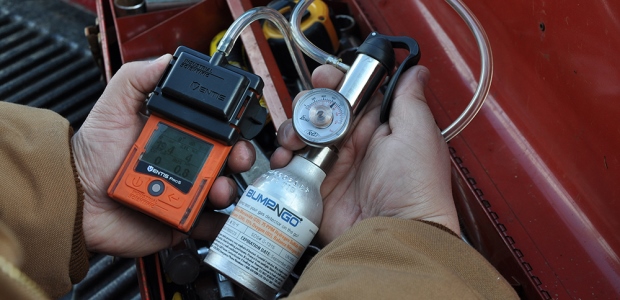
The No Maintenance Myth
People seem to have this yearning to find a gas detector that doesn't need to be bump tested or calibrated (but can magically be ready at any moment to provide the proper detection with 100 percent accuracy).
- By Kyle Krueger
- Jun 01, 2019
I am so tired of watching what I eat, having to keep up with a regular fitness routine, brushing my teeth, going to the doctor, and taking my daily medications. So today, I am going to stop. From now on, I will eat whatever I want, do ZERO fitness, and sit around the house all day—all despite the warnings from decades of research from countless health professionals and agencies.
This nonchalant lifestyle might be fun for a while. So why bother doing all those things in the first place? Probably because I want to live a long and healthy life so that I can see my kids graduate and one day meet my first grandchild. That is why I run four times a week, try to eat well, and take my daily medication. Is a day of not doing this daily maintenance going to hurt me? Probably not. But a prescription to the "no maintenance" lifestyle every single day will likely have compounding effects. You or I don't know what the effects will be.
I could be that 95-year-old who still smokes and drinks every day, or I could die at 55 of a heart attack. But I will go ahead and listen to the medical professionals, because the risk, quite frankly, isn't worth it. And for the most part, I think people accept and know they should do those things to be healthy. Whether people actually stick to a personal maintenance routine is a whole other matter.
So why has the myth of "no maintenance" been so pervasive throughout my 14-years in the gas detection industry? People seem to have this yearning to find a gas detector that doesn't need to be bump tested or calibrated (but can magically be ready at any moment to provide the proper detection with 100 percent accuracy). This mythical White Whale swims in the vast ocean of our safety thoughts as we circumnavigate our workplaces. We dream about it and want it to be true. However, I am here to tell you, I have found the mythical beast! Every monitor can transform by following these simple steps. 1. Buy a gas detector 2. Don't ever bump test it or calibrate it. That's it. Congratulations, you have a "no maintenance" gas detector!
There is a chance that a gas detector could be ready to act when you need it to. You start to think about all the time and money you will save not doing maintenance, then another contradicting thought might emerge. It goes something like, "If I do NOTHING, am I 100 percent sure that this thing will alarm when a potentially fatal atmosphere is present?" "Have you seen what this monitor looks like after a week in the field?" Okay, keep going, because you are on the right track to unraveling the pervasive myth. That uneasy feeling, that lack of peace of mind, should be the reminder you need to perform a bump test or calibration check.
The Moral of a North Dakota Story
North Dakota. I will never forget that day in North Dakota. A user called me stating that he was having trouble with his gas detector and didn't trust it. To determine whether the device would perform its important duty, we applied gas to it. We waited, and waited, and still no reading appeared on the monitor. We checked the tubing, regulator, and gas, and all were working. We were sending 25 ppm H2S on top of the monitor, and it read 0…0! We did more troubleshooting to find that the filter was clogged with a clear substance that blocked the ability of the sensor to see gas. We removed the filter and, sure enough, the sensor responded.
What is the moral of the North Dakota story? Some might get away with the "no maintenance" lifestyle with no issues. But when this user had the foresight to do "maintenance," he discovered that "maintenance" was critical, helpful, and important to his daily lifestyle.
"Instrument inaccuracy due to improper or irregular maintenance and calibration can lead to exposure to hazardous levels of toxic gases or to an oxygen-deficient atmosphere. This exposure can cause workers to suffer serious injuries or illness, and even death. Flammable gas explosions are often catastrophic, resulting in worker injuries and death, or destruction of property."
That quote is from a bulletin1 that OSHA issued in September 2013 titled "Calibrating and Testing Direct-Reading Portable Gas Monitors." To summarize their findings, I will borrow a phrase from the '80s . . . . "Just say no." Say "no" to "no maintenance." It doesn't matter that all the cool kids are doing it. Not performing maintenance can have dire consequences. While I won't paraphrase the remainder of the bulletin, I highly encourage you to take the time to read the bulletin in full. They go into very clear detail and reinforce the ground that your contradicting thought started to stand on.
We need to shed light on the "no maintenance" myth. It is not an innovation or a breakthrough in technology. It's a promotion of complacency. Please don't look to any gas detection manufacturer to give you permission to be complacent about your maintenance. That choice has always been, and will continue to be, yours. Do the right thing, and bump test and calibrate your monitors. Unless you want to gamble and roll the dice of uncertainly. Just know that the compounding debt can only be paid in the currency of human suffering.
Reference
1. https://www.osha.gov/dts/shib/shib093013.html
This article originally appeared in the June 2019 issue of Occupational Health & Safety.